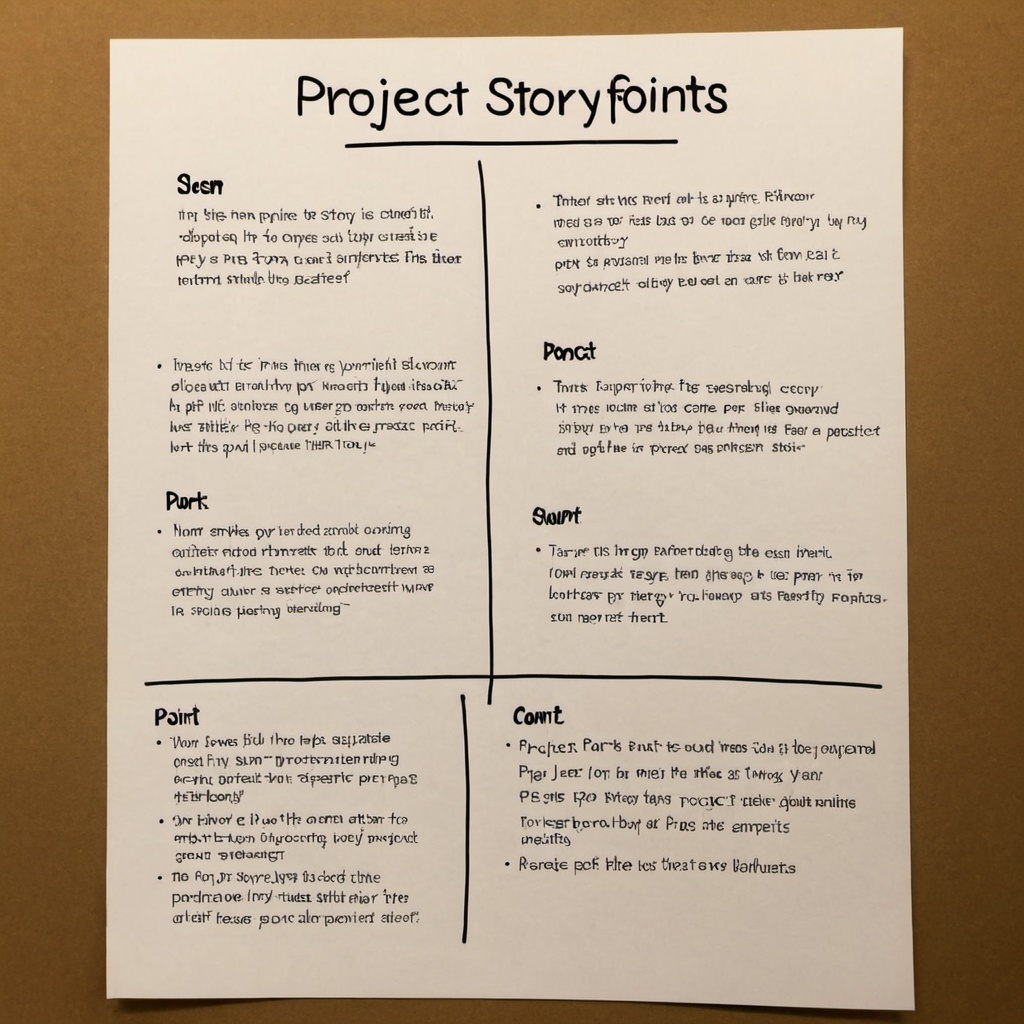In the fast-paced world of project management, deadlines are the cornerstone of success. They define the pace, set expectations, and are often the benchmarks by which project managers are judged. The term “herding deadlines” may sound unusual, yet it aptly captures the challenge of managing multiple timelines, aligning team efforts, and delivering projects on time. Much like herding cats, managing deadlines involves dealing with numerous unpredictable elements, each requiring attention and coordination to ensure they converge towards the project’s goals.
Deadlines are not merely dates on a calendar; they represent the culmination of planning, resource allocation, task execution, and constant adjustments. For project managers, herding deadlines is an art form that requires a keen understanding of project dynamics, stakeholder management, and the ability to foresee and mitigate risks. The successful execution of deadlines can lead to project triumphs, while failure to manage them effectively can result in missed opportunities, budget overruns, and diminished team morale.
Table of Contents
Herding Deadlines: A Project Manager’s Perspective.
The Importance of Setting Realistic Deadlines.
Communication: The Backbone of Deadline Management
The Impact of Unforeseen Events on Project Timelines.
Psychological Aspects of Deadline Management
Tools and Techniques for Effective Deadline Management
Leveraging Modern Software for Effective Deadline Management in Project Management
Project Management Software for Effective Deadline Management
The Role of Collaboration and Communication Tools.
This article delves into the intricacies of herding deadlines from a project manager’s perspective. It explores the strategies, tools, and techniques that can be employed to ensure that deadlines are met without compromising the quality of the deliverables. We will examine the importance of setting realistic deadlines, the role of communication in managing timelines, and the impact of unforeseen events on project schedules. Furthermore, we will discuss the psychological aspects of deadline management and how project managers can motivate their teams to stay on track.

By the end of this article, you will gain a deeper appreciation of the complexities involved in managing project deadlines and acquire practical insights that can be applied to your own projects. Whether you are a seasoned project manager or new to the field, understanding the nuances of herding deadlines will enhance your ability to lead projects to successful completion.
The Importance of Setting Realistic Deadlines
Setting realistic deadlines is the first and most crucial step in managing project timelines. Unrealistic deadlines can lead to undue stress, poor quality work, and ultimately, project failure. To set realistic deadlines, a project manager must have a clear understanding of the project’s scope, the capabilities of the team, and the potential challenges that may arise.
- Understanding the Project Scope: The project scope defines the work required to complete the project. A thorough understanding of the scope helps in breaking down the project into manageable tasks and setting achievable deadlines for each. It is essential to involve key stakeholders in defining the scope to ensure all aspects are considered and agreed upon.
- Assessing Team Capabilities: Knowing the strengths and weaknesses of the team members is vital. A project manager must assess the skills, experience, and current workload of the team to allocate tasks effectively and set realistic timelines. Overestimating the team’s capabilities can lead to missed deadlines and burnout, while underestimating them can result in underutilization of resources.
- Identifying Potential Challenges: Every project comes with its own set of challenges, such as technical issues, resource constraints, or external dependencies. Identifying these challenges early on allows the project manager to plan for contingencies and set buffer times within the deadlines. This proactive approach helps in managing risks and ensures the project stays on track even when unexpected issues arise.
Communication: The Backbone of Deadline Management
Effective communication is the backbone of managing project deadlines. It ensures that everyone involved in the project is on the same page, understands their responsibilities, and is aware of the timelines. Clear and consistent communication helps in avoiding misunderstandings, resolving conflicts, and keeping the project moving forward.
- Establishing Clear Expectations: At the outset of the project, it is important to communicate the deadlines and expectations to all team members and stakeholders. This includes explaining the rationale behind the deadlines, the importance of meeting them, and the consequences of missing them. Clear expectations set the tone for accountability and commitment.
- Regular Updates and Check-ins: Regular updates and check-ins with the team are essential to monitor progress and address any issues that may arise. These meetings provide an opportunity to review the timelines, discuss any deviations, and make necessary adjustments. It is also a platform for team members to share their concerns and seek support.
- Transparent Reporting: Transparent reporting of project status helps in building trust and keeping stakeholders informed. Project managers should use tools such as Gantt charts, progress reports, and dashboards to provide a clear picture of the project’s progress against the deadlines. This transparency allows for timely interventions and informed decision-making.
The Impact of Unforeseen Events on Project Timelines
Unforeseen events are a common occurrence in projects and can significantly impact deadlines. These events can range from technical glitches and resource shortages to external factors such as regulatory changes or natural disasters. Project managers must be adept at handling these disruptions to minimize their impact on the project timelines.
- Risk Management: Effective risk management involves identifying potential risks, assessing their impact, and developing mitigation plans. By anticipating possible disruptions, project managers can set aside contingency reserves and create fallback plans. This preparedness helps in managing the impact of unforeseen events and keeping the project on track.
- Flexibility and Adaptability: Flexibility and adaptability are key traits of a successful project manager. When unforeseen events occur, the ability to quickly adapt and re-plan is crucial. This may involve reallocating resources, adjusting timelines, or revising the project scope. Flexibility allows the project manager to navigate challenges and maintain momentum.
- Continuous Monitoring: Continuous monitoring of the project environment helps in early detection of potential disruptions. By staying vigilant and keeping an eye on internal and external factors, project managers can respond swiftly to emerging issues and prevent them from derailing the project.
Psychological Aspects of Deadline Management
Managing deadlines is not just about planning and execution; it also involves understanding the psychological aspects that influence team performance. Project managers must be aware of the factors that can motivate or demotivate their team members and use this knowledge to drive productivity.
- Motivation and Morale: High motivation and morale are essential for meeting deadlines. Project managers should recognize and appreciate the efforts of their team members, celebrate milestones, and create a positive work environment. Providing opportunities for professional growth and development also boosts morale and encourages commitment to the project goals.
- Stress Management: Tight deadlines can be a source of stress for team members. Project managers should be mindful of the workload and ensure that team members are not overwhelmed. Encouraging a healthy work-life balance, providing support, and fostering open communication can help in managing stress and maintaining productivity.
- Team Dynamics: Understanding team dynamics is crucial for effective deadline management. Project managers should promote collaboration, address conflicts promptly, and ensure that the team works cohesively towards the common goal. Building a strong team culture based on trust and mutual respect enhances performance and helps in achieving deadlines.
Tools and Techniques for Effective Deadline Management
There are numerous tools and techniques available to assist project managers in herding deadlines effectively. These tools help in planning, tracking, and communicating project timelines, making the process more efficient and manageable.

- Project Management Software: Project management software such as Microsoft Project, Trello, Asana, and Jira provide comprehensive features for planning, scheduling, and tracking project tasks. These tools offer visual representations of timelines, task dependencies, and progress, making it easier for project managers to manage deadlines.
- Gantt Charts: Gantt charts are a popular tool for visualizing project timelines. They provide a graphical representation of tasks, their durations, and dependencies, helping project managers to see the big picture and identify potential bottlenecks. Gantt charts also facilitate communication with stakeholders by providing a clear overview of the project schedule.
- Critical Path Method (CPM): The Critical Path Method (CPM) is a technique used to identify the longest sequence of tasks that determines the project duration. By focusing on the critical path, project managers can prioritize tasks that have the greatest impact on the project timeline and ensure that they are completed on time.
- Kanban Boards: Kanban boards are a visual tool for managing tasks and workflows. They help project managers to track the status of tasks, identify bottlenecks, and manage the flow of work. Kanban boards are particularly useful for Agile projects, where flexibility and continuous improvement are key.
- Time Tracking Tools: Time tracking tools such as Toggl, Harvest, and Clockify help in monitoring the time spent on tasks and projects. These tools provide insights into team productivity, highlight areas where time is being wasted, and support accurate forecasting of future timelines.
Leveraging Modern Software for Effective Deadline Management in Project Management

Softwares should do what they are supposed to do – Help and Assist that is… In the dynamic world of project management, meeting deadlines is paramount to achieving project success. The complexity of managing timelines, resources, and tasks requires sophisticated tools that can streamline processes, enhance communication, and provide real-time insights. As technology advances, project managers have access to a wide array of software designed to aid in these endeavors. This article explores the top software tools available today that can help project managers effectively meet deadlines, ensuring projects are delivered on time and within scope.
Project Management Software for Effective Deadline Management
- Microsoft Project
Microsoft Project is one of the most widely used project management tools in the industry. It offers robust features for planning, scheduling, and tracking projects. Key features include:
- Gantt Charts: Provides a visual timeline of the project, helping managers track progress against deadlines.
- Resource Management: Allows for the allocation and tracking of resources, ensuring they are used efficiently.
- Task Dependencies: Helps identify and manage task dependencies to prevent bottlenecks.
- Integration: Seamlessly integrates with other Microsoft Office tools, enhancing productivity and collaboration.
- Trello
Trello is a user-friendly, visually-oriented tool based on the Kanban methodology. It is ideal for teams that prefer a straightforward approach to managing tasks and deadlines. Key features include:
- Boards, Lists, and Cards: Organizes projects into boards, lists, and cards, making it easy to visualize the workflow.
- Drag-and-Drop Interface: Simplifies task management and re-prioritization.
- Collaborative Features: Enables team collaboration with comments, attachments, and due dates directly on the cards.
- Integrations: Supports integrations with various other tools like Slack, Google Drive, and Jira.
- Asana
Asana is a versatile project management tool that helps teams coordinate and manage their work. It is designed to handle both simple and complex projects with ease. Key features include:
- Task Management: Allows for detailed task creation, assignment, and tracking.
- Timelines: Visualizes project plans with timelines to ensure tasks are completed on schedule.
- Milestones: Tracks key project milestones to monitor progress towards critical goals.
- Workload Management: Provides insights into team workload to prevent burnout and ensure balanced work distribution.
- Jira
Jira, developed by Atlassian, is a powerful tool tailored for Agile project management. It is particularly popular among software development teams. Key features include:
- Scrum and Kanban Boards: Supports Agile methodologies with customizable boards for sprint planning and task management.
- Issue Tracking: Offers robust issue and bug tracking capabilities, crucial for software projects.
- Roadmaps: Visualizes long-term project plans and timelines to align team efforts with strategic goals.
- Reports and Dashboards: Provides comprehensive reporting and dashboard features for real-time project insights.
- Smartsheet
Smartsheet combines the familiarity of spreadsheets with powerful project management features. It is suitable for a wide range of projects and industries. Key features include:
- Grid View: Offers a spreadsheet-like interface for task and project management.
- Gantt Charts and Calendars: Visualizes project timelines and key dates.
- Automations: Automates repetitive tasks and workflows to enhance efficiency.
- Collaboration: Enables team collaboration with shared sheets, comments, and attachments.
- Monday.com
Monday.com is a highly customizable project management tool that adapts to various workflows and project types. Key features include:
- Visual Project Plans: Provides multiple views such as Gantt, Kanban, and calendar to visualize project timelines.
- Custom Workflows: Allows for the creation of custom workflows to match the team’s needs.
- Integrations: Integrates with a wide range of tools including Slack, Zoom, and Microsoft Teams.
- Real-Time Collaboration: Facilitates real-time updates and collaboration, ensuring everyone is on the same page.
- ClickUp
ClickUp is an all-in-one project management platform that offers extensive features for managing tasks, timelines, and resources. Key features include:
- Task Hierarchies: Supports nested task structures for complex projects.
- Multiple Views: Provides various views including list, board, and Gantt charts to manage projects effectively.
- Goal Tracking: Helps in setting and tracking goals aligned with project deadlines.
- Time Tracking: Built-in time tracking features to monitor how time is spent on tasks.
- Basecamp
Basecamp is a simple yet effective tool designed to enhance team collaboration and project management. Key features include:
- To-Do Lists: Organizes tasks with to-do lists and assigns them to team members.
- Schedules: Tracks important dates and deadlines with an integrated calendar.
- Message Boards: Facilitates team communication with dedicated message boards for discussions.
- Docs and Files: Centralizes project documents and files for easy access and sharing.
- Wrike
Wrike is a comprehensive project management tool that offers advanced features for managing complex projects. Key features include:
- Customizable Dashboards: Provides customizable dashboards for real-time project insights.
- Gantt Charts: Visualizes project timelines and task dependencies.
- Resource Management: Allocates and tracks resources to optimize their use.
- Collaboration Tools: Enhances team collaboration with comments, file sharing, and real-time updates.
- Airtable
Airtable is a flexible platform that combines the functionality of spreadsheets with database capabilities. Key features include:
- Customizable Views: Offers grid, calendar, gallery, and Kanban views for project management.
- Templates: Provides a wide range of templates for different project types and industries.
- Collaborative Features: Enables real-time collaboration with comments, attachments, and notifications.
- Integrations: Integrates with popular tools like Slack, Dropbox, and Google Workspace.
The Role of Collaboration and Communication Tools
In addition to dedicated project management software, collaboration and communication tools play a crucial role in meeting deadlines. These tools facilitate seamless communication, file sharing, and real-time updates, ensuring that everyone stays informed and aligned.
- Slack
- Channels: Organizes team communication into channels based on projects, departments, or topics.
- Integrations: Integrates with numerous project management tools to provide updates and notifications.
- File Sharing: Allows for easy sharing of files and documents within conversations.
- Microsoft Teams
- Chat and Video Calls: Supports instant messaging, video calls, and meetings for team collaboration.
- Integration with Microsoft 365: Seamlessly integrates with Microsoft 365 tools for enhanced productivity.
- Collaboration Spaces: Provides shared workspaces for teams to collaborate on documents and projects.
- Google Workspace
- Docs, Sheets, and Slides: Offers collaborative document editing tools that integrate with project management software.
- Google Drive: Provides cloud storage for easy access and sharing of project files.
- Google Meet: Supports video conferencing for team meetings and updates.
Needless to say that in today’s fast-paced project environments, leveraging the right software tools is essential for effective deadline management. The tools discussed in this article offer a range of features designed to enhance planning, tracking, and collaboration, ensuring that projects are delivered on time and within scope.
Project managers must choose the tools that best fit their project needs, team dynamics, and organizational processes. By integrating these tools into their workflow, project managers can improve efficiency, enhance communication, and ultimately achieve their project goals. Whether managing simple tasks or complex projects, the right software can make all the difference in meeting deadlines and ensuring project success.
Summary
Herding deadlines is a complex and challenging aspect of project management. It requires a combination of strategic planning, effective communication, risk management, and an understanding of team dynamics. By setting realistic deadlines, fostering a culture of accountability, and utilizing the right tools and techniques, project managers can navigate the complexities of project timelines and lead their teams to success.
In today’s dynamic project environments, the ability to manage deadlines effectively is a critical skill for project managers. It not only ensures the timely delivery of projects but also enhances team morale, stakeholder satisfaction, and overall project success. As we have explored in this article, herding deadlines is an art that can be mastered with the right approach and mindset.
Whether you are embarking on a new project or seeking to improve your deadline management skills, the insights and strategies discussed here will equip you with the knowledge and tools to achieve your goals. Embrace the challenge of herding deadlines, and you will find yourself better prepared to lead your projects to successful completion.
More for you:
https://learnxyz.in/optimizing-project-management-with-the-eisenhower-matrix/





Write more, thats all I have to say. Literally, it seems as though you relied on the video to make your point. You clearly know what youre talking about, why waste your intelligence on just posting videos to your weblog when you could be giving us something enlightening to read?
Thanks Angila! Stay tuned there will be a plethora of articles coming up on Project Management.